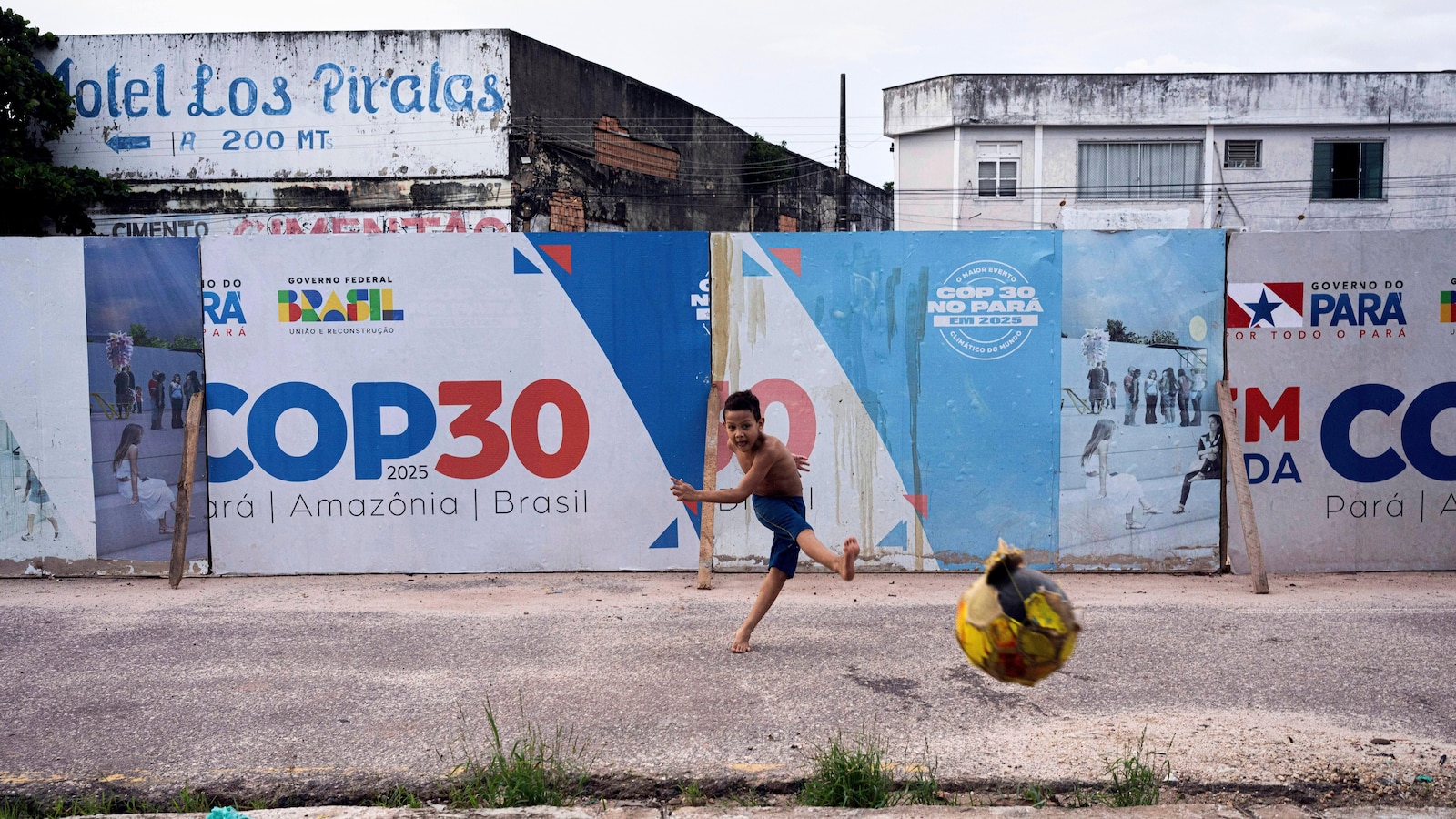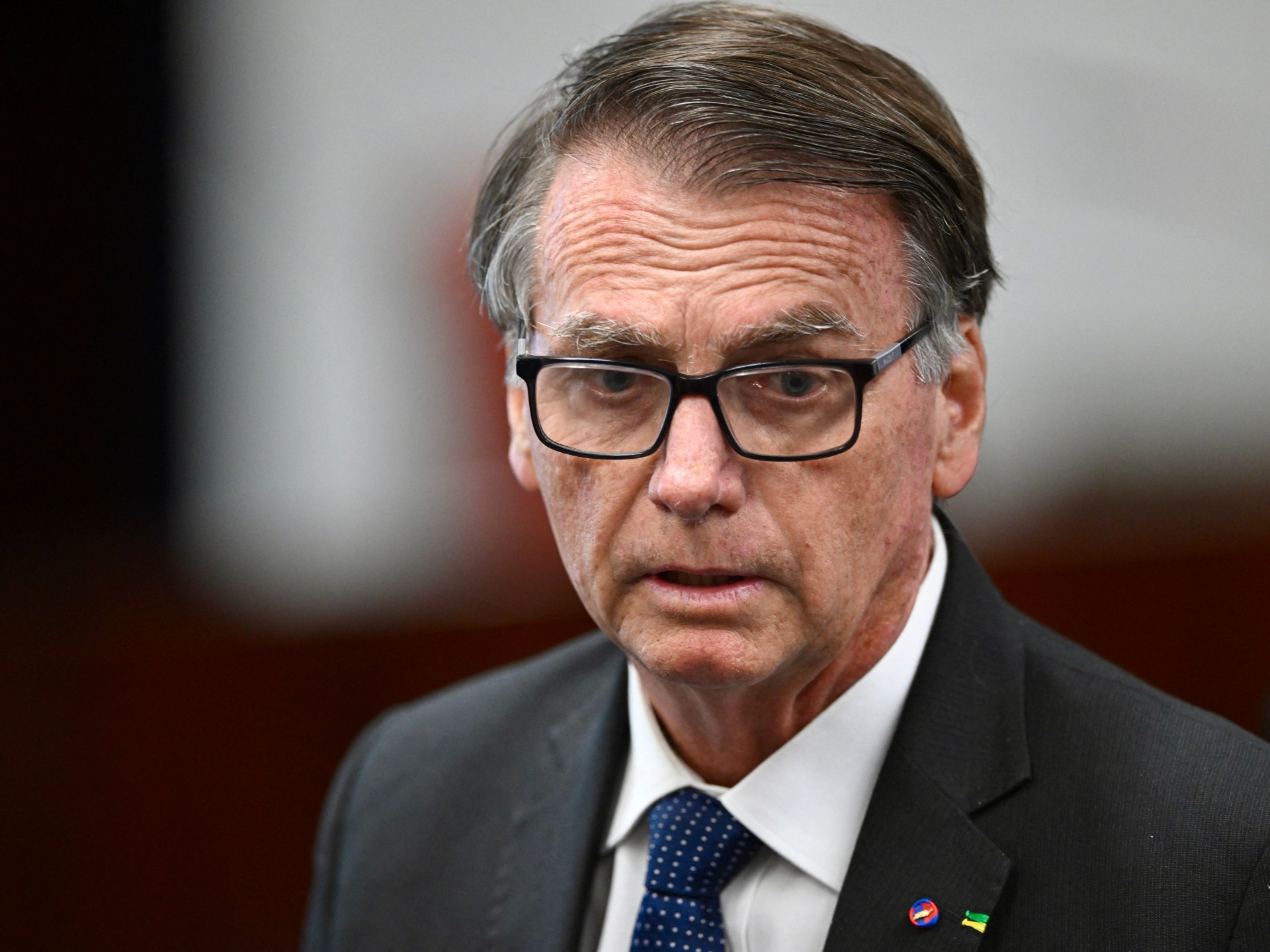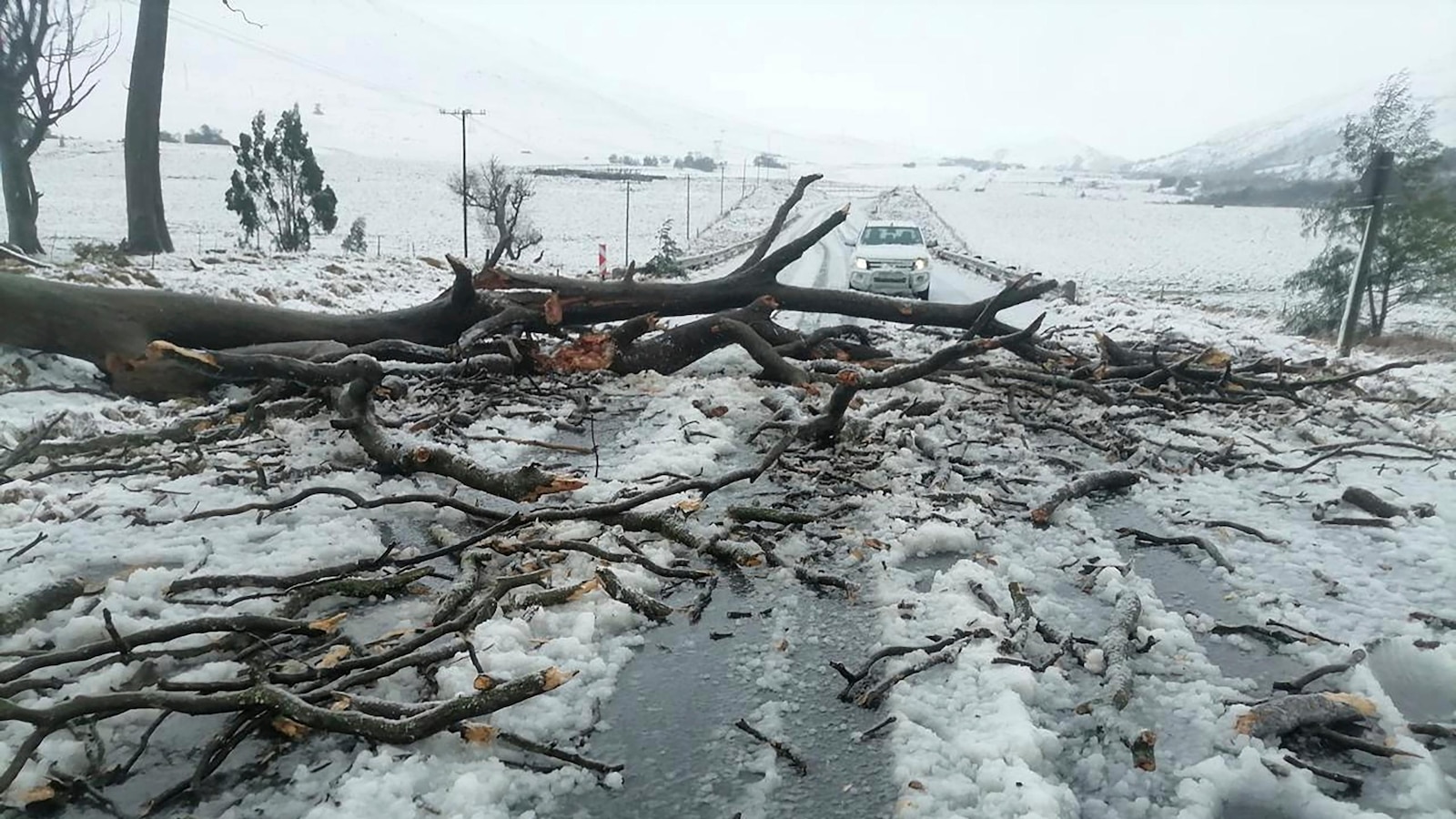Meerut, India – The last of the paint had begun to peel off Mohammad Mohsin’s house two years ago. The faded green, white and yellow paints on the walls still bore stains from last year’s monsoons.
A narrow, 3-foot-tall (0.9 metres) passage only possible to enter by crouching, led from the kitchen into a courtyard lined with buffalo dung, a rusting scooter, and a creaking cot in northern India’s Meerut district, about 100km (62 miles) from New Delhi.
“We will get the house painted when it’s finally wedding time,” Mohsin had said, leaning on an iron shovel, when Al Jazeera visited him in February earlier this year, referring to his sister Aman’s wedding plans.
But the date for the wedding came and went – without it being solemnised.
In 2023, Mohsin had borrowed roughly $1,440 under the Indian government’s Kisan Credit Card (KCC) scheme. “Kisan” means “farmer” in Hindi.
Launched in 1998, the KCC initiative is intended to modernise rural credit by providing accessible, short-term, low-interest credit to farmers for agricultural expenses, thereby replacing exploitative private moneylenders.
Issued against land holdings, the KCC operates like a revolving credit line, allowing farmers to borrow at the start of a crop cycle and repay after the harvest. With a modest interest rate of 4 percent annually, the scheme is among the most accessible financial instruments for millions of farmers.
But for years now, the KCC scheme has deviated from its original purpose. Farmers in rural India, where agriculture barely sustains families and where dowry in marriages is the norm, have used KCC loans as a convenient but dangerous alternative to family income.
The KCC money Mohsin borrowed in 2023 from a state-run bank’s local branch was not meant to sow sugarcane or buy fertiliser. He always meant to use it for his sister’s dowry: Aman’s prospective in-laws had demanded a Maruti Wagon-R car, a larger Mahindra Scorpio SUV, and hundreds of thousands of rupees in cash, when the marriage was planned.
KCC looks and can be used like a regular credit card, including for cash withdrawals. Clutching the family’s KCC card issued in his father Mohammad Kamil’s name, Mohsin withdrew the money from an ATM and went straight to a car dealer in Meerut to make the down payment for a Wagon R car.
In February 2025, Aman’s proposed marriage collapsed under a new set of dowry demands. By now, Mohsin was already in significant debt and had no money to sow crops, or invest in seeds or farm machinery.
He was also saddled with the car he had bought for the groom. He missed paying the monthly instalments a few times. When farmers fail to repay during a crop cycle, the interest rate jumps from 4 percent to 7 percent, which is what happened with Mohsin.
He now repays the loan in small instalments, but knows that he will be playing catchup for years. And the longer he delays his payments, the higher the risk that the loan could be classified as a non-performing asset (NPA), damaging his credit rating and future borrowing capacity.
Meanwhile, 22-year-old Aman finished Fazilat, a seven-year course in Islamic theology offered by Darul Uloom, a prominent Muslim seminary in Deoband, about 80km (50 miles) from Meerut. The course is considered the equivalent of a bachelor’s degree from a regular college.
Aman’s family has also resumed its search for another groom. “I will get married when the right family agrees,” Aman told Al Jazeera.
But families do not just agree. They negotiate – and dowry is the currency. Tens of thousands of Indian women have been killed by their in-laws over dowry demands. In 2024 alone, India saw a dowry-related death every 30 hours, according to data from the National Crime Records Bureau.
“In our part of the world, no dowry means no groom,” Aman’s 60-year-old mother, Amina Begum, told Al Jazeera, sitting in one of the corners of their sparse home.
Once a groom is finalised and the new dowry demands are negotiated, Mohsin will need cash again. And he may have to rely on the KCC scheme, again.
But a new KCC loan cannot be sanctioned until the previous one is fully repaid. The only way around this involves local middlemen who help farmers repay the interest on existing KCC loans, and get the principal renewed in the bank as a fresh loan. In exchange, these middlemen charge an interest rate as high as between 2 and 5 percent per day.
The result: If Mohsin gets another KCC loan sanctioned, he will need to use that to also repay the middlemen who helped him get it – perpetuating the cycle of indebtedness he is trapped in.
![Mohsin at his home near Meerut in India [Ismat Ara/Al Jazeera]](https://www.aljazeera.com/wp-content/uploads/2025/06/DSC_0133-1749527540.jpg?w=770&resize=770%2C513&quality=80)
‘System breaks your dignity’
India’s farmers receive limited state support for unexpected or heavy personal expenses, such as hospital bills, children’s education, social obligations, or even weddings – often forcing them to rely on informal credit or agricultural loans meant for farming needs.
For instance, India’s public healthcare spending is among the lowest globally, consistently under 2.5 percent of the gross domestic product (GDP). The limited resources put a significant strain on poor families in cases of medical emergencies.
As a result, across India’s agrarian belt, mainly in the north, the KCC scheme is being drained to plug life’s emergencies, exposing a deep rural distress.
A farmers’ union leader and a politburo member of the Communist Party of India, Vijoo Krishnan, says that in addition to weddings, farmers are increasingly using KCC loans for healthcare and education. This diversion of money leads to what Krishnan calls a “development debt trap”, where farmers are forced to take on loans just to meet basic survival needs, rather than to invest in productivity or growth.
A 2024 study published in The Pharma Innovation Journal, an Indian interdisciplinary publication that also features research in agriculture and rural development, found that only a fraction of KCC loans go towards agriculture. About 28 percent of the KCC-holding farmers who were respondents in the study said they used the fund for household needs, 22 percent for medical expenses, 14 percent for children’s education, and nearly 10 percent for marriage-related expenses.
“Farming barely pays enough to sustain a family,” said Mohammad Mehraj, the former head of Mohsin’s Muslim-majority village of Kaili Kapsadh. “If there’s a medical emergency or a wedding, the pressure is too much.”
The fear of repayment haunts farmers, rooted in the deep shame that failure brings. Everyone has heard the stories. “In a nearby village, a man in his forties was declared a defaulter. His name was read out in the village square. The shame was so unbearable that his wife moved back to her parents’ home,” Mohsin recalled. The man in question, he says, has not been seen since. No one knows if he fled, or if he is even alive.
Mohsin lives with the same fear. “The system doesn’t break down your door, it breaks your dignity,” he said. In small villages with close-knit communities, a bank official’s visit to the house to seek repayment of loans is seen as an embarrassment to be avoided at all costs.
“I’d rather starve than have a bank man knock on our door,” said Mohsin’s father, Kamil, who is in his 70s, his voice barely above a whisper. Around him, others nodded in agreement.
To escape shame, farmers like Mohsin rely on the middlemen who charge a steep interest rate to help them renew KCC loans without settling the principal.
Thomas Franco, a former general secretary of the All India Bank Officers’ Federation, said that while schemes like KCC have expanded credit access for farmers, they have also created a debt trap.
“At the harvest time, many farmers, already burdened with earlier debts, are forced to take additional loans. Loans intended for productivity often get diverted to meet immediate social obligations,” he told Al Jazeera.
By 2024, the Indian government’s official data shows that the KCC scheme had disbursed more than $120bn to farmers, a sharp rise from $51bn in 2014.
But those numbers mask a more complex reality in which banks become a part of the serial indebtedness crisis, while showcasing high numbers of loan disbursals, Franco said.
“The loans get renewed every year without actual repayment, and in the bank’s books, it shows as a fresh disbursal, even though the farmer does not get the actual funds. This exaggerates the success numbers,” he said.
Meanwhile, as India’s farmers find themselves buried in mountains of debt, many are taking their own lives.
In 2023, Maharashtra, India’s richest state, contributing about 13 percent to the country’s GDP, reported the highest number of farmer suicides – at 2,851. This year, Maharashtra’s Marathwada region is one of the worst hit. In the first three months of 2025 alone, the region recorded 269 suicides, marking a 32 percent increase from the same period in 2024.
In neighbouring Karnataka, between April 2023 and July 2024, 1,182 farmers died by suicide, primarily due to severe drought, crop loss and overwhelming debt. In the northern state of Uttar Pradesh, farmer suicides rose by 42 percent in 2022, compared with the previous year. Similarly, Haryana, also in the north, reported 266 farm suicides in 2022, up 18 percent from 225 in 2021.
Critics argue that without deep structural reforms aimed at providing better public welfare systems for farmers and their families, such as affordable healthcare, quality education, and reforms to make farming profitable, schemes like the KCC will remain short-term solutions.
Jayati Ghosh, a leading development economist and professor at the University of Massachusetts Amherst, said that India’s agricultural credit system is fundamentally out of sync with how farming works.
“Crop loans are typically structured for a single season, but farmers often need to borrow well before sowing, and can only repay after harvesting and selling. Forcing repayment within that narrow window is unrealistic and harmful, especially when farmers lack the support to store crops and wait for better prices,” she said.
Ghosh, who co-authored a 2021 policy report for the Andhra Pradesh government and has studied agrarian distress for more than three decades, told Al Jazeera that key Indian financial institutions – the Reserve Bank of India (RBI), the central bank and NABARD, the apex rural development bank – were to blame for treating agriculture like any other commercial enterprise.
“The failure lies with NABARD, the RBI and successive governments. Agricultural lending needs to be subsidised, decentralised and designed around real conditions in the field,” she said.
Schemes like the KCC, she said, are built on the flawed belief that cash alone can solve rural distress.
“We’ve built a credit system assuming farmers just need money. But without investment in irrigation, land security, local crop research, storage and market access, loans won’t solve the crisis,” she said.
![Mohsin (left) and a cousin survey their fields while wondering whether farming has any future at all in India [Ismat Ara/ Al Jazeera]](https://www.aljazeera.com/wp-content/uploads/2025/06/DSC_0218-1749527590.jpg?w=770&resize=770%2C513&quality=80)
‘I wonder if farming even has a future’
The KCC scheme has also been riddled with controversies, with multiple loan scams surfacing across India in recent years.
In Kaithal, a town in northern Haryana state, six farmers used forged documents to secure nearly $88,000 in loans, which ballooned to $110,000 before detection, due to accrued interest over time after the farmers failed to repay them.
In the Himalayan state of Uttarakhand, agricultural dealer Mohammad Furkan, in collusion with a bank manager, created fake bills and ghost loans worth $1.2m in 2014, earning him a three-year sentence in March 2023.
In Lucknow, the capital of Uttar Pradesh state where Meerut is located, three State Bank of India managers sanctioned about $792,000 in fraudulent KCC loans between 2014 and 2017, using forged land records and fake documents. The federal Central Bureau of Investigations (CBI) booked them in January 2020 after an internal bank inquiry. The matter is still being probed.
Yet, bank officials say that despite years of scams and red flags, the KCC scheme continues to suffer from weak oversight.
“There’s no systemic check in place,” said a loan disbursal agent affiliated with the National Bank for Agriculture and Rural Development (NABARD), who has been processing KCC applications in rural Uttar Pradesh for more than a decade. He spoke to Al Jazeera on condition of anonymity, as he is not authorised to speak to the media.
But even if the KCC was cleaned up and all scammers punished, it would not solve the problem, say some farmer leaders.
“This is not about debt. It’s about dignity,” said Dharmendra Malik, the national spokesperson of the Indian Farmers’ Union, a prominent group. “You can’t solve agrarian distress with easy loans. You need investment in irrigation, storage, education and guaranteed prices for the crops.”
Back in Kaili Kapsadh, Mohsin’s buffalo stood tethered in the courtyard, swatting flies with its tail. It is worth $960 and, in this village, that is a status symbol, akin to owning a vintage car in a wealthy urban suburb.
But prestige does not pay back loans. Mohsin has not been able to renew his family’s KCC loan, worth about $1,500, for more than two years. He is still repaying the last one.
Each harvest yields the same bitter crop for him: more bills and losses. Looking at his sugarcane fields, already browning under a harsh sun, he said: “Sometimes I wonder if farming even has a future.”
If you or someone you know is at risk of suicide, these organisations may be able to help.




Leave a Comment